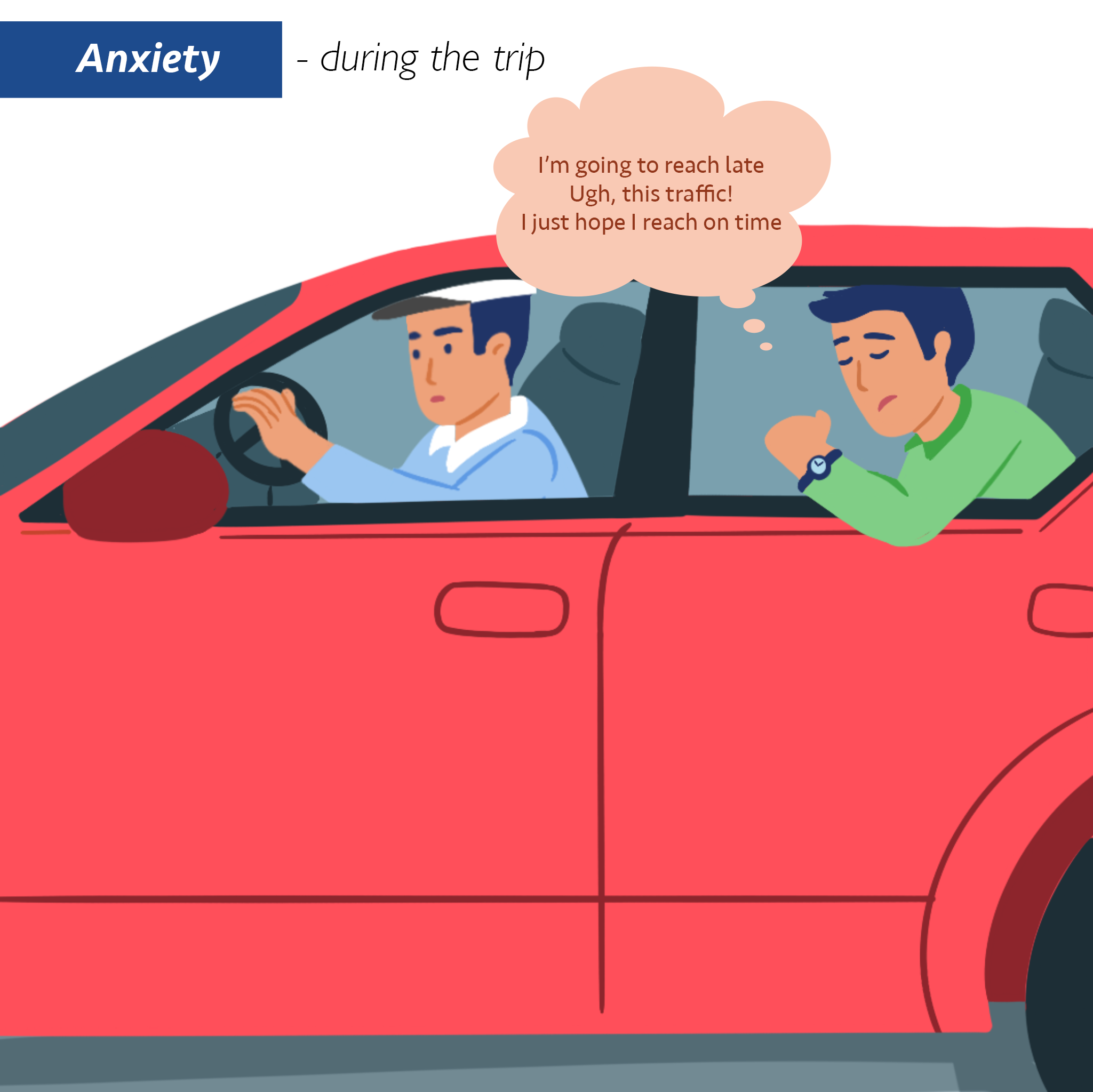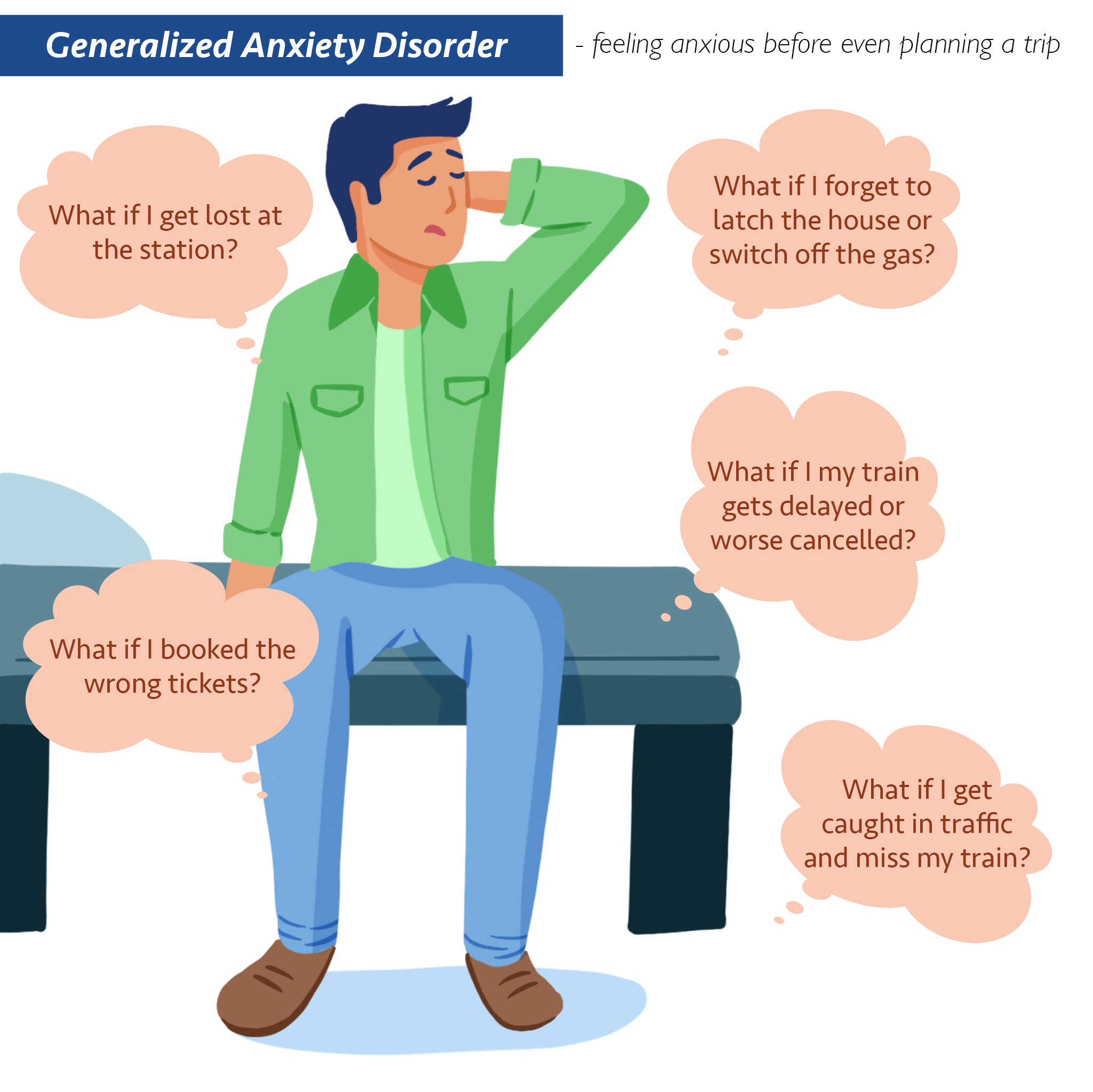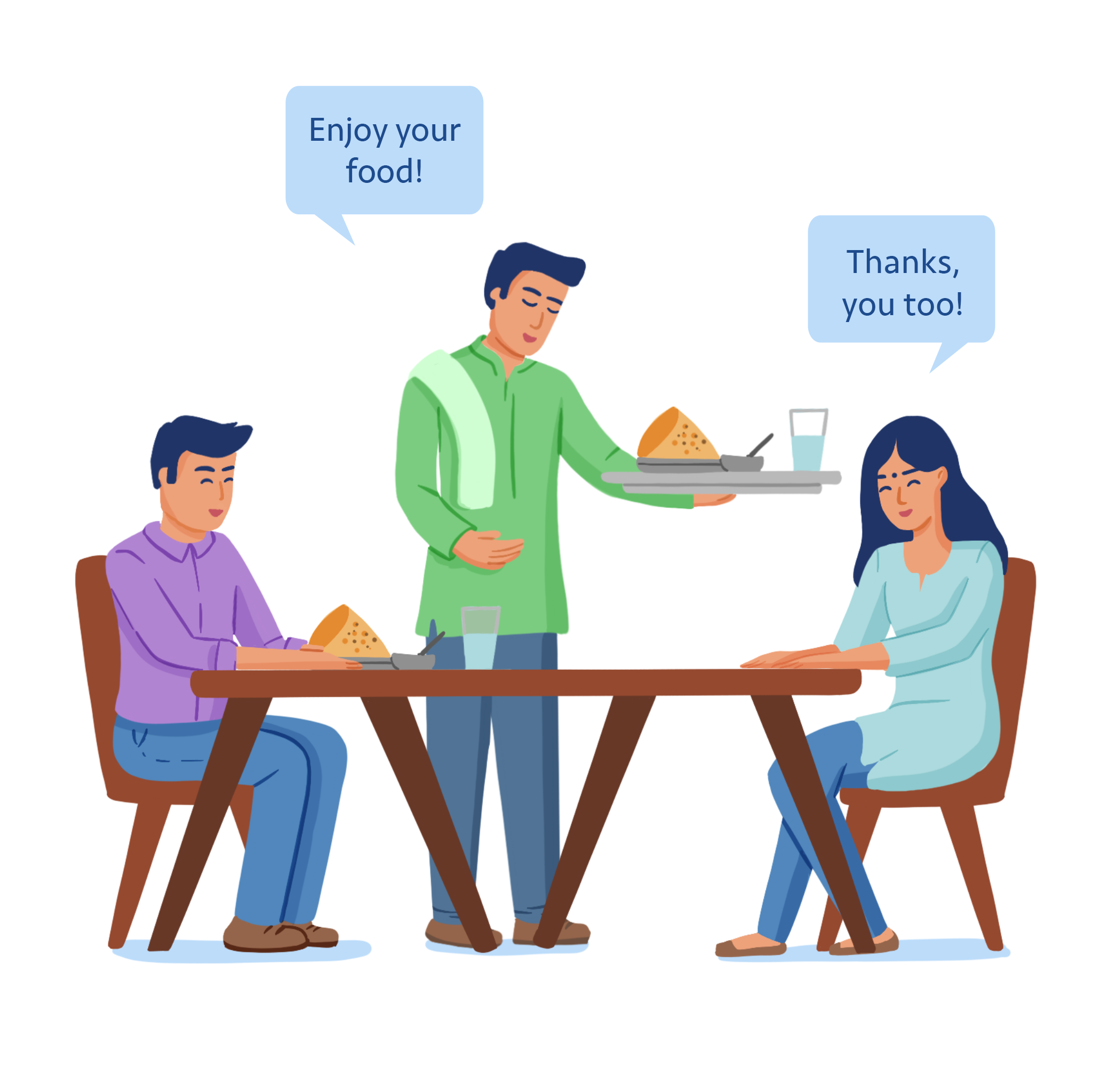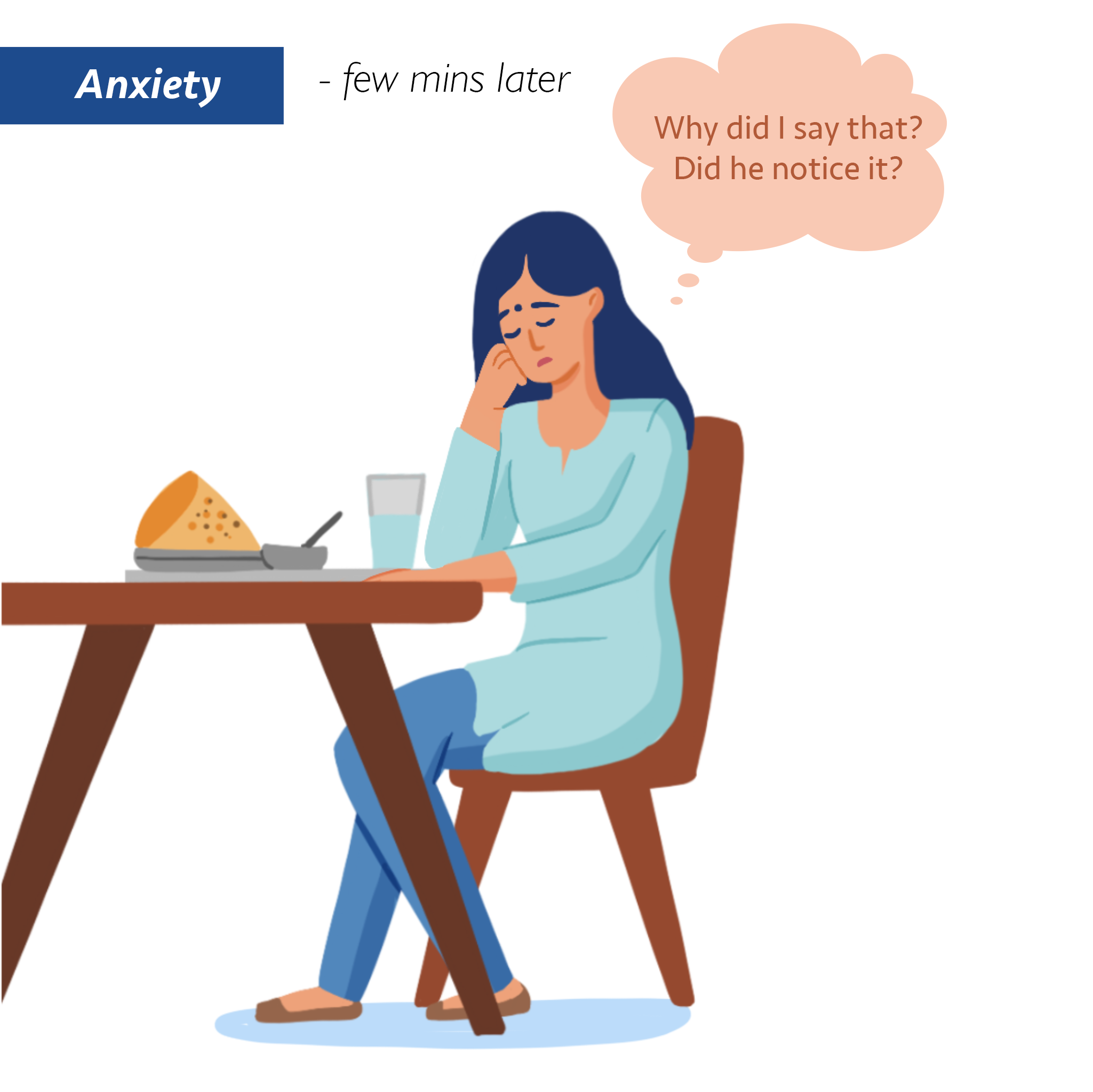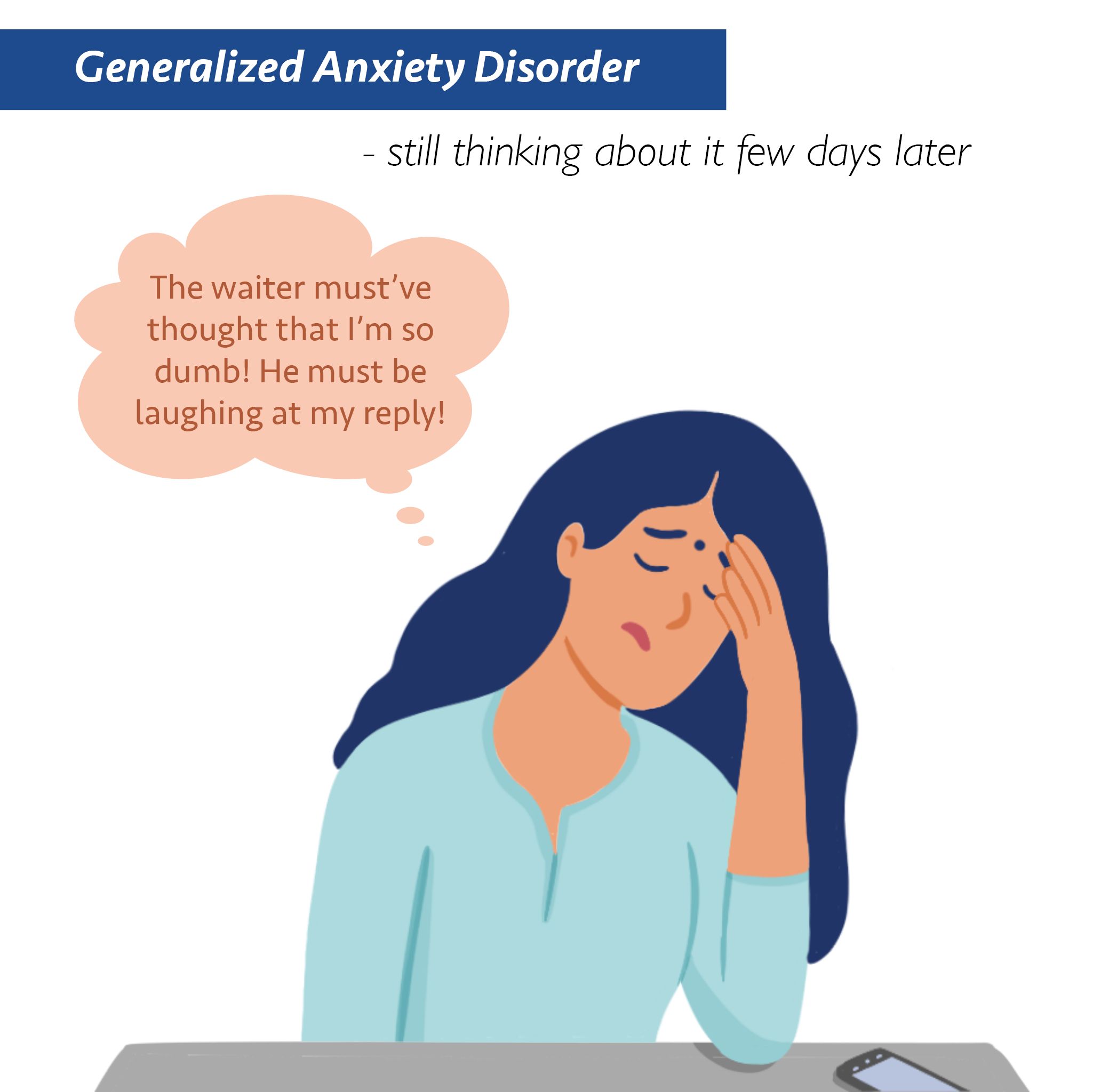Generalized-Anxiety Disorder
Generalized-anxiety disorder (GAD) is an anxiety disorder where a person experiences anxiety through the day which begins to disrupt their life. They may worry about their health, relationships, career, finances or even death. Their life is consumed by the worry and will affect them physically as well.
Symptoms of GAD
A person with GAD will experience some of the following symptoms for at least six months:
- Excessive worrying
- Feeling afraid for no reason
- Feeling restless
- Feeling tired for no reason
- Not being able to concentrate
- Feeling irritable
- Stiff muscles or muscle pain
- Unable to fall asleep, nightmares or disturbed sleep
- Difficulty with daily functioning
Coping with an Anxiety Disorder
An anxiety disorder can be treated with medication and therapy, but you can also do some things on your own to manage the condition.

Physical activity
One of the most common symptoms that you may experience with an anxiety disorder is restlessness. Engaging in any form of physical activity regularly can help you use up this energy leaving little room for other physical sensations like palpitations or muscle tension.

Reducing substance use
Many substances can aggravate feelings of anxiety. If you’re suffering from an anxiety disorder, you may want to adjust your intake of caffeine, alcohol or nicotine and see how that affects your levels of anxiety.

Identify and manage your triggers
Getting a mood tracker or just making notes on a daily basis can help you identify things that you can do to cope with the triggers of your anxiety.
For example, if you feel more anxious when you haven’t got a full night’s rest, it makes sense to prioritize your sleep to manage the anxiety. Other possible triggers of anxiety could be:
 Too much caffeine
Too much caffeine


Once you identify these triggers, you can make changes to your lifestyle by planning ahead for a situation or avoiding it depending on the trigger.
Am I just Anxious or do I have an Anxiety disorder?
